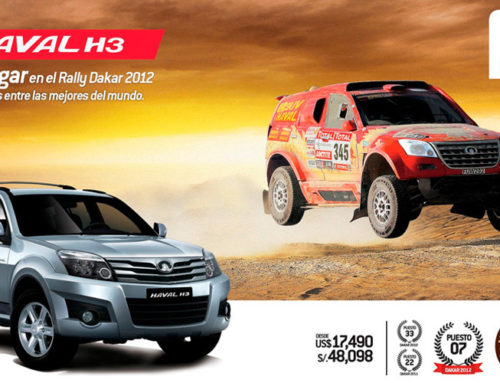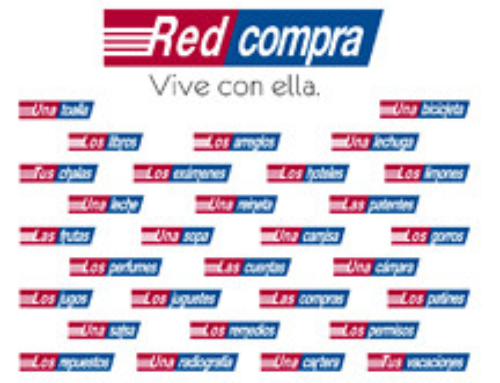Introduction
During the year 2008 the satellite pay-tv company DirecTV (DTV) developed an interesting marketing campaign in Chile, focusing on a specific strategy for the re-launch of their prepaid satellite TV service. We will analyze the reaches of this campaign and the considerations for a potential adaption to the US market.
The Chilean Marketing Communication Campaign
The campaign was launched in April 2008 and consisted in the offer of the prepaid self-installable product “DIRECTV Prepago”. The kit included the antenna, decoder, remote control and the smart card for almost 100 dollars. By the other hand, the service had two content packages from 30 to 42 dollars, including a sport premium channel (Nixon, 2008).
The concept used as the central message was “freedom”. Free from bills and contracts, rechargeable whenever and with the possibility to install it anywhere. DirecTV wanted to break the paradigm of where and how you buy, install, active and consumes pay-tv; since this was the first time that the clients had the total autonomy to do it.
According to Pamela Gidi, the Marketing Director of the company, the message they wanted to transmit was that “people should realize that it is possible to enjoy the best experience in TV with a prepaid format, which is affordable for many people who haven´t the chance to contract a pay television service” (Todo TV Media, 2009). We have to add that in Chile the traditional company´s target market was the high-end segment, being this new prepaid product for the D socioeconomic segment (Nixon, 2008).
Entering in the campaign, it was focused more in transmitting the benefits of the product than the price, and as we said with the idea of freedom with a high dose of humor. The way to present the central idea was through the famous Spaniard signer of the 60s Nino Bravo, and his love song “Libre” (free), generating a parody of a fan together with the music with other lyrics related with the brand (Effie Awards, 2009).
As medias they used TV (http://www.youtube.com/watch?v=r7XbPvHByM8), radio taking advantage of the adjusted funny song, newspapers with the “fan” character giving more tough information, and internet with digital advertising. One thing to mention is the high relevance of the retail´s point of sales, where finally people make the buying decision.
The business objectives of the strategy were to raise the market share and the rate of active prepaid customers. After 3 months, the results where outstanding, the sales increased by 154% and the rate of active clients moved from 21 to 51% (Effie Awards, 2009).
Differences between the Chilean and the United States (US) market
As countries, Chile and the US have lots of differences, first is their development level and the consequent GDP per capita. For 2012 Chile will end with a GDP of 15,400 dollars and the US with the amount of 47,200 dollars, more than 3 times. Buy the other hand, in population the US is more than 18 times Chile, reaching 313 million people. (Index Mundi, n.d.).
Despite the differences in development and scale of these countries, in the cultural aspects they are very close, both are considered occidental and capitalist countries with a great aspirational way of living, centered in the family, the work of both parent and bit time for entertainment. It is said in Chile that the development model was copied and adopted from de US.
In reference to the pay-tv market, the US has almost the double in household penetration with an 83% compared with the Chilean market that has only the 40%. By technology, the satellite system is more widely used in Chile, with the 56% of the market share compared with the 33% in the US.
Adaptation of the Campaign
The first thing to clarify is that the prepaid TV product was mainly developed for people that could not acquire the regular pay-tv, in the Chilean case were households from the middle-low socio economic segment with difficulties to access the bank system. Other thing to say is that the campaign´s focus was “freedom” to make your own decisions in acquiring the system without the intervention of the company.
As we saw, the US has highest levels of household incomes and pay-tv penetration than Chile, that is why the US campaign will focus on another market segment that could demand the product and share the same problem of credit access: (1) Newly young independent individuals without established credit, (2) Foreign people that are not citizens yet without credit history established in the US, and (3) The ones that have emerged from bankruptcy and currently have stable income but a compromised history.
Because of the high GDP and high pay-tv penetration in the US households, the product will have the possibility to access premium television programing, the same that is available for the normal pay-tv option. It will be a premium brand aligned with the public perception of DirecTV.
The central message of the campaign will be more than “freedom” will be related with “independence” because of the strong national feelings that the US people have for this issue, and the link that we can establish with the 3 target segments. The young people want independence in their lives; the foreigners want to feel Americans and the emerged from bankruptcy are Americans that need other opportunity.
The aspirational feelings of having a premium pay-tv programming will be aroused together with the message that all of them are “Americans” (that is the link with the independence issue) and should not be asides or treated different. For the central characters we could use American heroes and all the environment of the Independence Day.
The campaign has to be massive, that is why all the typical mass medias will be used (national TV, radio, newspaper and magazines) and some outdoors and digital advertising. Like in Chile, we think that the distribution channels are going to be crucial. We will use big retail stores and not only the ones related with electronics, because they are too specific and we want a more broad communication. These points of sales will have stands full with the figures of the campaign and the “independence” issues.
References
Campaign (2010, Jan 5). DirecTV prepago Chile. Retrieved on August 1, 2012 from http://www.youtube.com/watch?v=r7XbPvHByM8
Effie Awards (2009). Cómo ganaron. Ideas efectivas que valen oro. Retrieved on August 1, 2012 from http://www.effie.cl/revistas/comoganaroneffie2009.pdf
Index Mundi (n.d.). Retrieved on August 1, 2012 from http://www.indexmundi.com/european_union/gdp_per_capita_(ppp).html
Langefeld, M. (2010, December 22). DirecTV: Stocks buybacks will drive EPS growth. Retrieved on August 2, 2012 from http://seekingalpha.com/article/243230-directv-stock-buyback-will-drive-eps-growth
Nixon, P. (2008, April 28) DirecTV launches prepaid TV – Chile. Retrieved on August 1, 2012 from http://www.bnamericas.com
Peppler, Ch. (n.d.). Satellite TV: Prepaid isn´t just for cellular service anymore. Retrieved on August 2, 2012 from http://www.articleclick.com/Article/Satellite-TV—Prepaid-Isn-t-Just-for-Cellular-Services-Anymore/919194
Subtel (1012, May). Estadísticas de la industria – Telecomunicaciones. Retrieved on August 2, 2012 from http://www.subtel.gob.cl
Todo TV Media (2009). Gold for DirecTV in the Effie Awards Chile 2009. Retrieved on August 1, 2012 from http://www.todotvnews.com
Related articles
- DirecTV’s Latin America Unit Will Spice Up Results As U.S. Business Slows (forbes.com)
- Dish Network exec doesn’t rule out merger with DirecTV (bizjournals.com)
- DirecTV earnings up, still no end to Lakers TV blackout (examiner.com






Leave A Comment